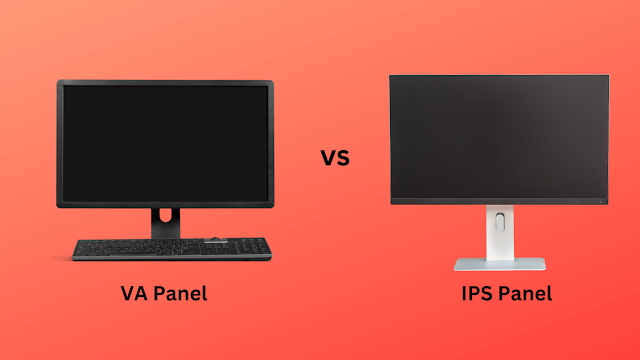Choosing the right display panel can make or break your viewing experience, whether you're gaming, watching movies, or working. The two main contenders in the display panel market are VA (Vertical Alignment) and IPS (In-Plane Switching) panels. Each has its unique strengths and weaknesses, making the decision more complex than it might seem at first glance. Let's dive into the intricacies of VA and IPS panels to help you determine which one suits your needs best.
Understanding Display Panel Technologies
What are VA Panels?
What are IPS Panels?
IPS panels, on the other hand, align their liquid crystals parallel to the glass substrates. This alignment allows for better color reproduction and wider viewing angles but typically results in lower contrast ratios compared to VA panels.
History of VA and IPS Panels
Evolution of VA Panels
Evolution of IPS Panels
IPS technology was created to overcome the limitations of both TN and VA panels, especially in terms of color accuracy and viewing angles. Since their introduction, IPS panels have become the go-to choice for professionals in graphic design and photography due to their superior color performance.
Key Features of VA Panels
Contrast Ratio
Black Levels
Viewing Angles
While not as wide as IPS panels, modern VA panels have improved viewing angles. They offer a decent viewing experience from off-center positions, although colors may shift slightly.
Key Features of IPS Panels
Color Accuracy
Response Time
Viewing Angles
IPS panels excel in providing wide viewing angles, typically up to 178 degrees horizontally and vertically. This makes them ideal for collaborative work and environments where multiple people view the screen simultaneously.
Performance Comparison
Color Reproduction
Brightness
Response Times
VA panels generally have slower response times compared to IPS panels, which can lead to motion blur in fast-moving scenes. However, the difference is becoming less noticeable with advancements in both technologies.
Gaming and Multimedia
Best Choice for Gamers
Best Choice for Movie Watchers
Movie enthusiasts might lean towards VA panels due to their superior contrast ratios and black levels. These features make movie watching more immersive, especially in dark environments. On the other hand, IPS panels are also a great choice if you value color accuracy and watch movies with friends or family, thanks to their wide viewing angles.
Professional Use Cases
Graphic Design and Photo Editing
Office Work and Productivity
For general office work and productivity tasks, either panel type can suffice. However, IPS panels might have a slight edge due to their better viewing angles and color accuracy, which can reduce eye strain during long hours of work.
Price Comparison
Cost-Effectiveness
Long-Term Value
While IPS panels are typically more expensive, their superior color accuracy and viewing angles may offer better long-term value, particularly for professionals who rely on precise color reproduction.
Durability and Longevity
Lifespan of VA Panels
Lifespan of IPS Panels
IPS panels are also durable but can suffer from issues like backlight bleeding over time. However, with advancements in technology, these issues are becoming less common, ensuring a long lifespan.
Energy Efficiency
Power Consumption of VA Panels
Power Consumption of IPS Panels
IPS panels typically consume more power, mainly due to their need for stronger backlighting to achieve high brightness levels and color accuracy. This might be a consideration for environmentally conscious consumers.
User Experience
Comfort for Prolonged Use
Eye Strain Considerations
Modern displays come with various technologies to reduce eye strain, such as blue light filters and flicker-free screens. Both VA and IPS panels can incorporate these technologies, but the inherent color stability and viewing angles of IPS panels might provide a slight advantage.
Market Availability
Popular Brands and Models
Market Trends
The market for display panels is constantly evolving, with both VA and IPS technologies seeing regular improvements. Currently, there’s a growing trend towards higher refresh rates and better HDR performance in both panel types.
Pros and Cons Summary
Pros and Cons of VA Panels
Pros:
- High contrast ratio
- Excellent black levels
- More affordable
Cons:
- Slower response times
Pros and Cons of IPS Panels
Pros:
- Superior color accuracy
- Wide viewing angles
- Faster response times
Cons:
- Higher cost
- Lower contrast ratio compared to VA
Here's a summary of the main differences between VA and IPS panels:
Conclusion
Choosing between VA and IPS panels ultimately depends on your specific needs and preferences. If you prioritize contrast and black levels for an immersive viewing experience, especially for movies and casual gaming, VA panels are a great choice. However, if color accuracy, viewing angles, and faster response times are more critical, especially for professional work or competitive gaming, IPS panels are the way to go. Consider your primary use case, budget, and personal preferences to make the best decision.
FAQs
Q1: Which panel is better for gaming, VA or IPS?
Q2: Are IPS panels worth the extra cost?
Q3: Do VA panels have better color accuracy?
Q4: How do VA and IPS panels handle fast-moving images?
Q5: Which panel technology is better for reducing eye strain?
IPS panels might be slightly better for reducing eye strain due to their consistent color accuracy and wide viewing angles, though both panel types offer technologies like blue light filters to help mitigate eye strain.




